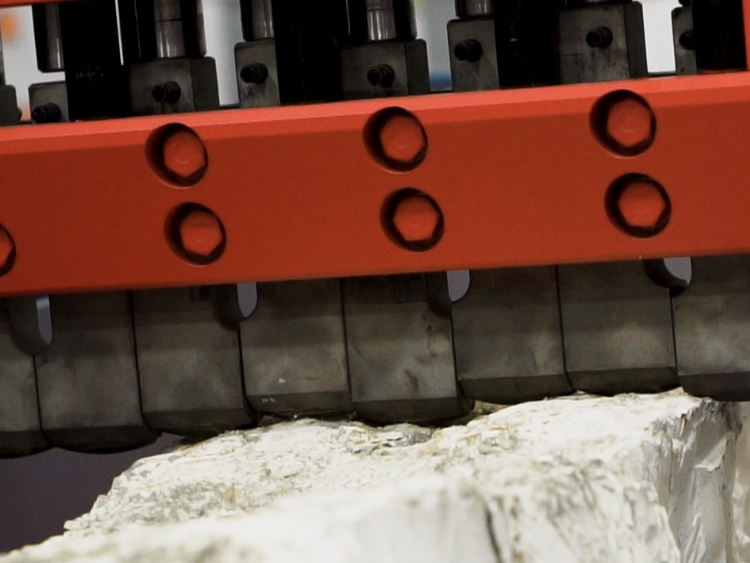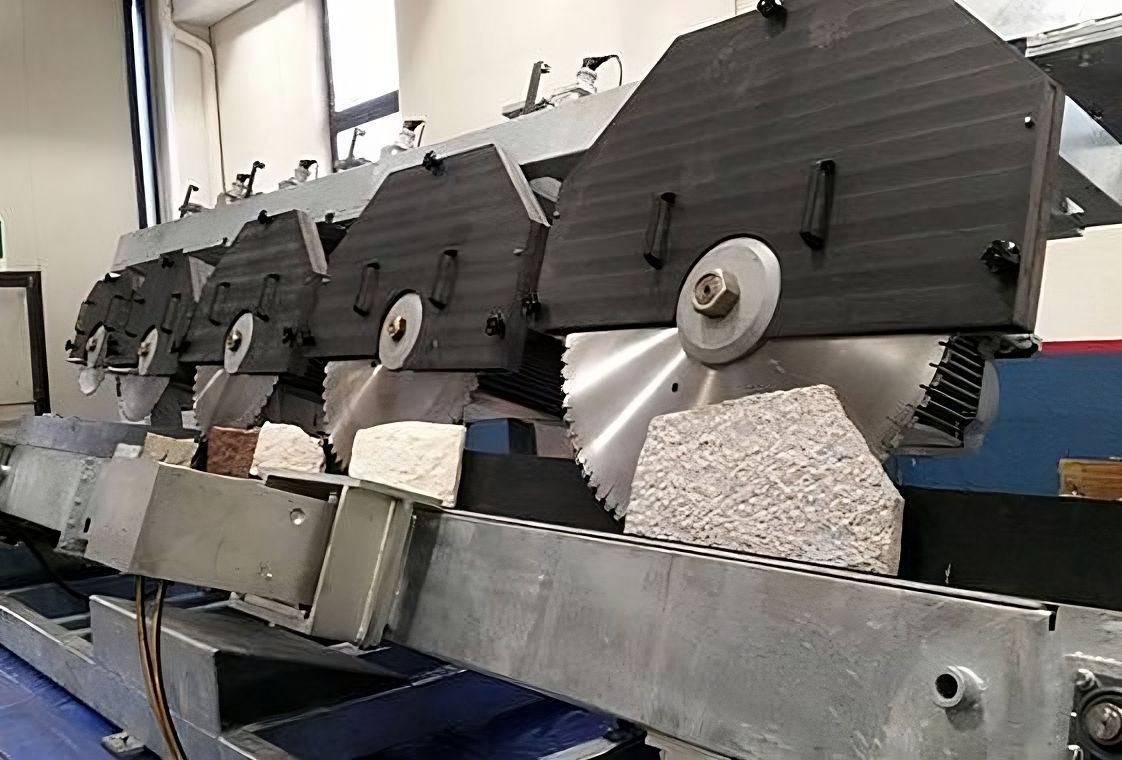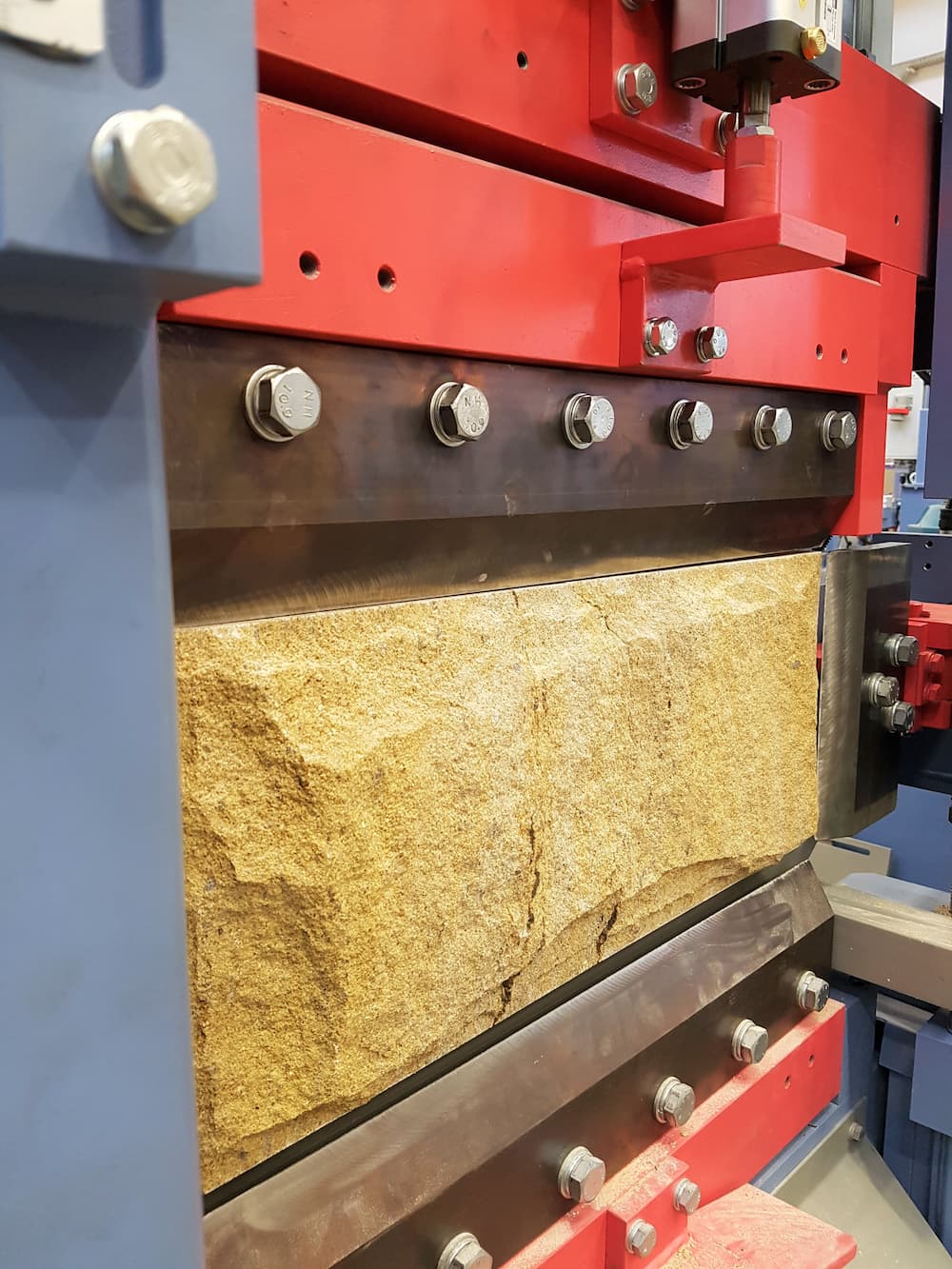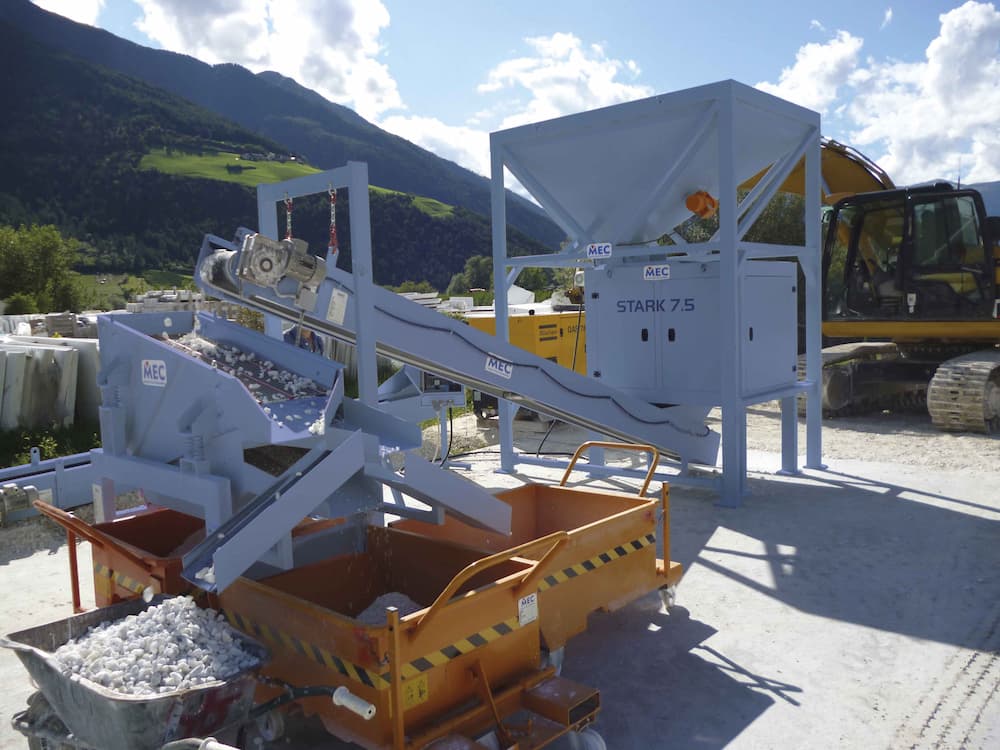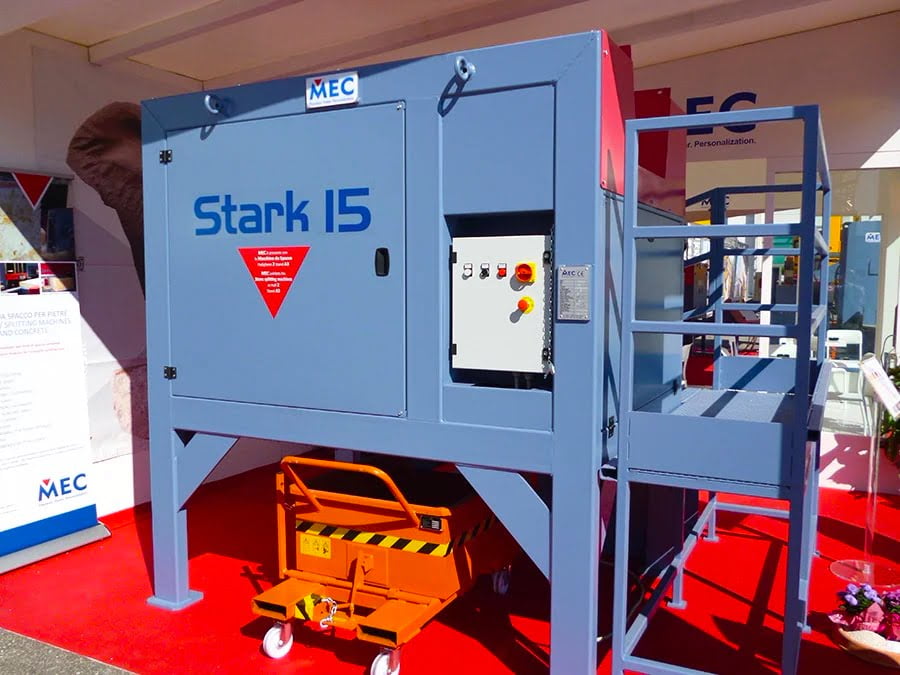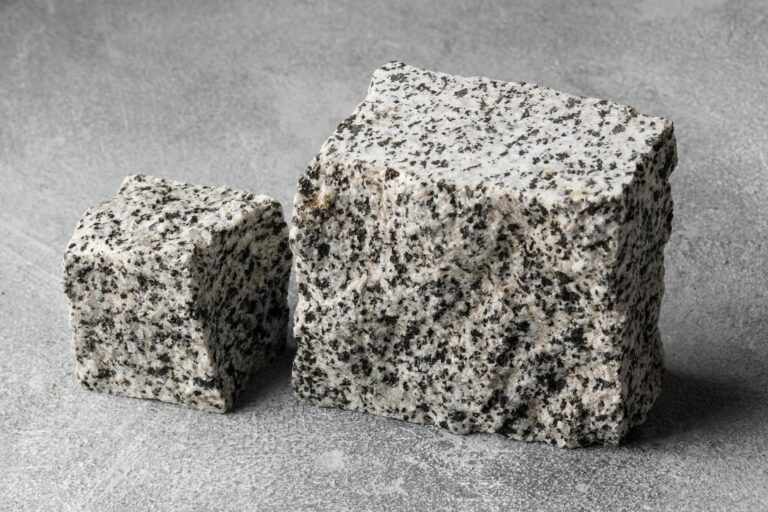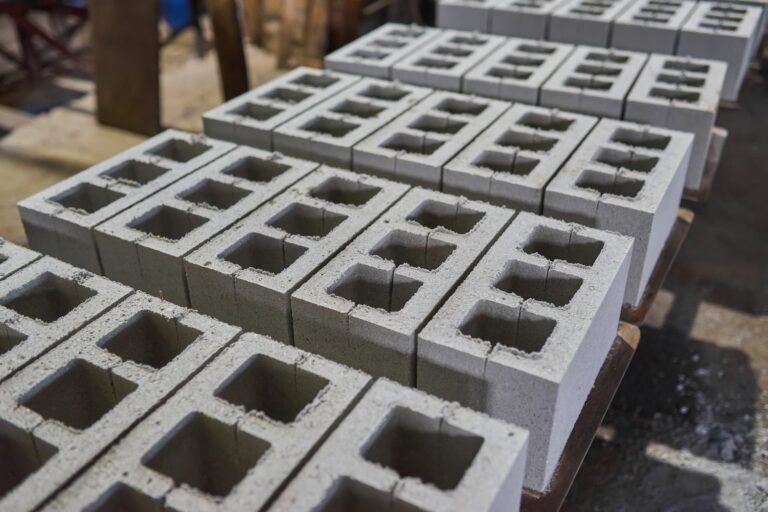Humans have always needed to reduce the stone into usable dimensions and volumes, both to defend, isolate and protect themselves and to create the works that the works that history, art, architecture and sculpture have handed down to us until today.
Split stone products are part of our daily lives and are almost everywhere; just look at the curbs of the sidewalks, pedestrian paths in public gardens, the bases of the statues, the cobblestones of the old town, the walls, towers, bridges and churches of your city and so on. Wherever you turn, you’ll find building elements, slabs, strips, cubes, blocks and various products made of any type of stone that after being extracted and studied was split and laid.
Even today, the fact that splitting continues to meet aesthetic and functional requirements, depending on the greater or lesser ability of the stone to be split, derives from the type of equipment to be used, the power and energy consumption, the tool wear, the productivity, the actual possibility of making building elements with certain characteristics and, last but not least, their intended purpose.
The interest in stone splitting technology is clearly growing – although there are still those who believe splitting is a “trivial” operation. This is not exactly the case. Splitting must also take into account the structure of the natural stone, the way in which it is splitted and the surfaces that can be obtained. Why is this concept so fundamental? Simple. All rocks are different from each other, even when they have the same name, or the same minerals, or the same chemical composition; this is due to the fact that they have a different structure. Let’s see a more practical example with granite and gneiss. These two materials have an almost identical chemical composition but a completely different structure, due essentially to two different genetic processes. Granite is a magmatic rock resulting from the solidification of magma composed by big crystals. While gneiss is a metamorphic rock whose structure is characterized by a discontinuous planar anisotropy (band structure) – whose origin linked to a different distribution of mineralogical components in different directions. Both rocks are very compact, but the splitting ability of the gneiss is easier than granite. The process therefore requires much less energy and, thanks to a very marked planar splitting, guarantees on average more regular surfaces.
This rule – if we can define it this way – applies to all the operations that can be carried out on the rock itself, such as cutting, finishing and laying, as well as splitting.
The great growth in stone splitting has not been due solely to technology. A big contribution came, in fact, from the market, which, urged by the ideas, proposals and innovations of architects and designers, began to explore new languages and new forms of expression of natural stone.
How exactly does the stone splitting work? Splitting a stone means dividing an initial volume of stone into two or more elements, whose surface processed by the splitting is characterized by a rustic finish. This relief, the roughness and the deviation from the perfect flatness of this surface strongly depend on the characteristics of each individual stone (structure, texture, minerals, preferential orientations, etc.), and on the machines used to split it.
No other category of machines used in stone splitting processing features the flexibility distinctive of the family of splitting machines. With this technology, in fact, you can have splitting power ranging from a few tons to many hundreds of tons (with no upper limit), you can treat thicknesses less than one centimeter or more than a meter thick; you can break cubes of a few centimeters as well as entire quarry blocks. Finally, you can process pieces weighing less than a kilogram, but also blocks of several tons. This great flexibility lies not only in the range of machines and their performance, but also in each individual machine, which can be set up and customized according to the needs of the operator.
Where can a splitting machine be installed? It can be installed at the foot of the quarry or near it, under a simple canopy or outdoors, in the small laboratory as well as in the large plant. Or it can be transported where it is most needed.
Even today we’got to the end of this chapter about the world of stone splitting, explaining how these machines evolved through history both for their functions and modalities. If you would like to deepen this subject, do not hesitate to contact us through our social profiles or thorugh our “contact us” section. Mec’s Team will be honored to answer to all your questions.
